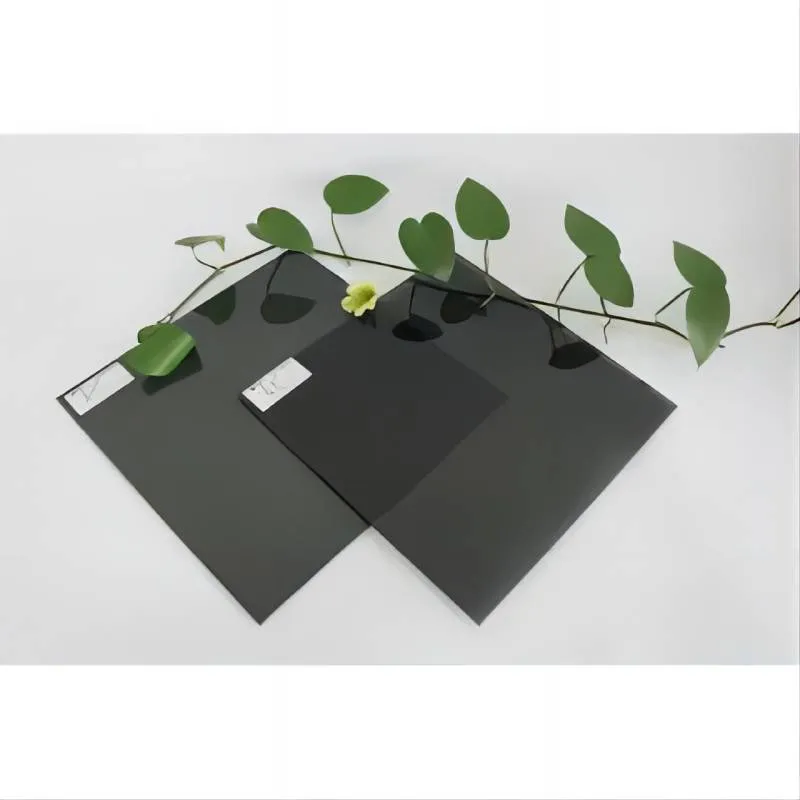The Rise of Tinted Glass Suppliers Transforming Architectural Design and Safety
In recent years, tinted glass has gained immense popularity across various sectors, particularly in architecture and automotive industries. As the need for energy efficiency, privacy, and aesthetic appeal continues to grow, tinted glass suppliers are playing a crucial role in meeting these demands. This article explores the benefits of tinted glass, the trends in the industry, and the importance of choosing the right supplier.
Understanding Tinted Glass
Tinted glass refers to glass that has been treated with a coloring agent, resulting in various degrees of color and opacity. This treatment not only enhances the visual appeal of buildings and vehicles but also provides several functional benefits. Tinted glass can reduce glare, block harmful UV rays, and improve energy efficiency by regulating indoor temperatures. As a result, buildings with tinted glass can reduce their reliance on artificial heating and cooling systems, leading to lower energy costs and a reduced carbon footprint.
Benefits of Tinted Glass
1. Energy Efficiency One of the most compelling reasons to use tinted glass is its energy efficiency. By reflecting a significant amount of sunlight, tinted glass helps maintain a comfortable indoor temperature. This is particularly beneficial in regions with extreme temperatures, reducing the need for air conditioning in the summer and heating in the winter.
2. Privacy and Security Tinted glass offers a level of privacy that clear glass cannot provide. This feature is especially valued in commercial buildings, offices, and homes, where occupants seek to safeguard their activities from prying eyes. Moreover, darker tinted windows can also enhance security by making it difficult for outsiders to see inside.
3. Aesthetic Appeal Tinted glass comes in various colors and shades, allowing architects and designers the freedom to create visually striking buildings. The aesthetic flexibility provided by tinted glass can significantly enhance the overall appeal of a structure, making it a preferred choice for modern architectural designs.
4. UV Protection Tinted glass can block up to 99% of harmful UV rays, protecting both interior furnishings and occupants from sun damage. This feature is particularly important in regions with intense sunlight, contributing to the longevity of furniture, artwork, and flooring.
5. Safety Many tinted glass products are made using tempered or laminated glass, which provides added strength and shatter resistance. This makes tinted glass an excellent choice for both residential and commercial applications where safety is a concern.
Industry Trends
tinted glass supplier
The tinted glass industry is rapidly evolving, driven by innovations in technology and changing consumer preferences. One notable trend is the increasing demand for smart tinted glass, which can adjust its tint based on sunlight exposure. This technology enhances energy efficiency further and adds an element of convenience for users.
Another trend is the integration of sustainable practices within the tinted glass supply chain. More suppliers are focusing on eco-friendly production methods and sourcing materials that reduce their environmental impact. This shift reflects a broader societal trend toward sustainability and responsible consumption.
Choosing the Right Tinted Glass Supplier
As the market for tinted glass expands, the importance of selecting the right supplier cannot be overstated. Here are some key factors to consider
1. Quality of Product Ensure that the supplier offers high-quality tinted glass products that meet industry standards. Look for certifications that indicate compliance with safety and performance requirements.
2. Variety of Options A good supplier should offer a wide range of tinting options, including different colors, shades, and levels of darkness. This variety allows for customization to meet specific design requirements.
3. Customer Support Excellent customer service is vital in the glass supply industry. Choose a supplier that provides guidance throughout the selection process and offers support for installation.
4. Reputation and Experience Research the supplier's reputation in the market. Reviews and testimonials from previous clients can provide valuable insights into the supplier's reliability and quality of service.
5. Sustainability Practices In today's environment-conscious world, consider suppliers who prioritize sustainable practices, from production to delivery.
Conclusion
Tinted glass suppliers are at the forefront of a significant shift in architectural design, contributing to energy efficiency, safety, and aesthetic appeal. As the demand for tinted glass continues to grow, it becomes increasingly essential for architects, builders, and consumers to choose quality suppliers. By understanding the benefits and industry trends associated with tinted glass, stakeholders can make informed decisions that align with their needs and values, ultimately transforming the built environment for the better.
 Afrikaans
Afrikaans  Albanian
Albanian  Amharic
Amharic  Arabic
Arabic  Armenian
Armenian  Azerbaijani
Azerbaijani  Basque
Basque  Belarusian
Belarusian  Bengali
Bengali  Bosnian
Bosnian  Bulgarian
Bulgarian  Catalan
Catalan  Cebuano
Cebuano  Corsican
Corsican  Croatian
Croatian  Czech
Czech  Danish
Danish  Dutch
Dutch  English
English  Esperanto
Esperanto  Estonian
Estonian  Finnish
Finnish  French
French  Frisian
Frisian  Galician
Galician  Georgian
Georgian  German
German  Greek
Greek  Gujarati
Gujarati  Haitian Creole
Haitian Creole  hausa
hausa  hawaiian
hawaiian  Hebrew
Hebrew  Hindi
Hindi  Miao
Miao  Hungarian
Hungarian  Icelandic
Icelandic  igbo
igbo  Indonesian
Indonesian  irish
irish  Italian
Italian  Japanese
Japanese  Javanese
Javanese  Kannada
Kannada  kazakh
kazakh  Khmer
Khmer  Rwandese
Rwandese  Korean
Korean  Kurdish
Kurdish  Kyrgyz
Kyrgyz  Lao
Lao  Latin
Latin  Latvian
Latvian  Lithuanian
Lithuanian  Luxembourgish
Luxembourgish  Macedonian
Macedonian  Malgashi
Malgashi  Malay
Malay  Malayalam
Malayalam  Maltese
Maltese  Maori
Maori  Marathi
Marathi  Mongolian
Mongolian  Myanmar
Myanmar  Nepali
Nepali  Norwegian
Norwegian  Norwegian
Norwegian  Occitan
Occitan  Pashto
Pashto  Persian
Persian  Polish
Polish  Portuguese
Portuguese  Punjabi
Punjabi  Romanian
Romanian  Russian
Russian  Samoan
Samoan  Scottish Gaelic
Scottish Gaelic  Serbian
Serbian  Sesotho
Sesotho  Shona
Shona  Sindhi
Sindhi  Sinhala
Sinhala  Slovak
Slovak  Slovenian
Slovenian  Somali
Somali  Spanish
Spanish  Sundanese
Sundanese  Swahili
Swahili  Swedish
Swedish  Tagalog
Tagalog  Tajik
Tajik  Tamil
Tamil  Tatar
Tatar  Telugu
Telugu  Thai
Thai  Turkish
Turkish  Turkmen
Turkmen  Ukrainian
Ukrainian  Urdu
Urdu  Uighur
Uighur  Uzbek
Uzbek  Vietnamese
Vietnamese  Welsh
Welsh  Bantu
Bantu  Yiddish
Yiddish  Yoruba
Yoruba  Zulu
Zulu 

